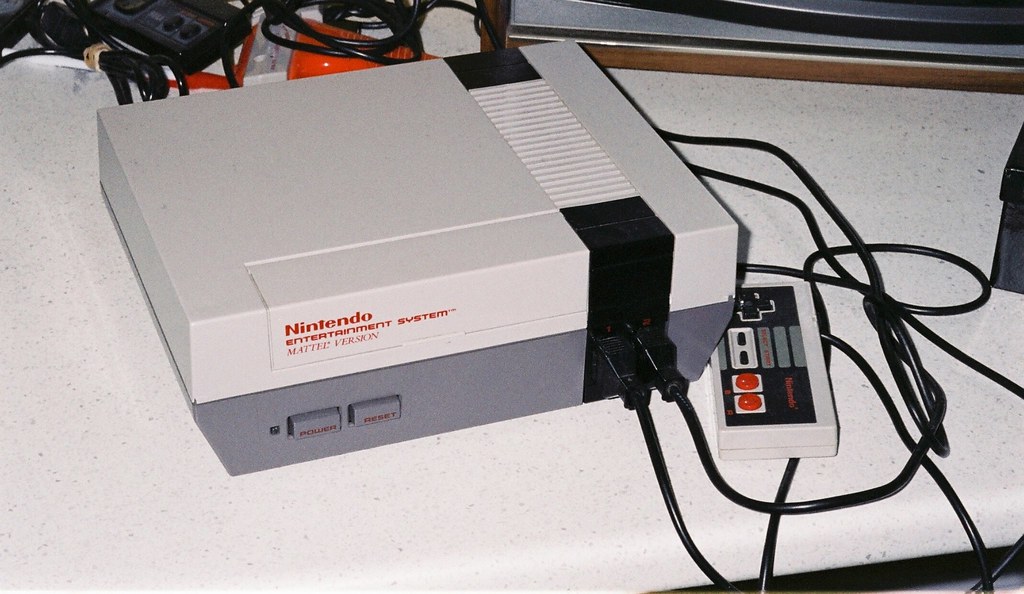Super Mario Bros: The Journey to Perfection

With the rapid progression of AI, people are harkening back to the age-old question–will humans ever be able to catch up with the machines? However, what many don’t know is that one small community has recently made a major step into proving the capabilities of humanity, and now they are slowly tightening the gap between man and machine.
This is the Super Mario Bros. speedrunning community.
Despite being released all the way back in 1985, a small, but dedicated group of gamers is still pushing the original Super Mario Bros. (or SMB1) to its absolute limits. These gamers are known as speedrunners.
Speedrunning is the act of completing a video game–or a specific task in a video game–as quickly as possible. SMB1 is one of the oldest and most popular games for speedrunning, with thousands of people playing to push down their times in the various categories of competition. The most popular category is any%, which lifts all restrictions on what players are allowed to do in order to reach the final level. This includes the usage of warp zones, wrong warps, and other glitches and exploits. It is in this category that speedrunners are approaching the tool-assisted speedrun.
As defined by speedrunning expert Bismuth, tool-assisted speedruns (or TAS) are a “set sequence of controller inputs that completes a task in a video game while optimizing for time.” Basically, a TAS is created by humans who can use tools not available to a real time speedrunner in order to craft the perfect speedrun.
However, to understand how humans were able to match the TAS up to the final level–8-4–the foundations and history of SMB1’s speedrunning community needs to be examined.
This is the story of the Super Mario Bros. any% speedrun.
Before examining the progression of the game, there is an extremely important aspect of SMB1 speedrunning that separates it from other speedruns–the framerule system.
In SMB1, the game only checks for level completion every 21 frames (or approximately 0.35 seconds), rather than every frame. This 21-frame time increment is what is referred to as a framerule. This means that in SMB1 speedrunning, a player can only lose time in increments of 21 frames (with the exception of 8-4 since timing stops when the player touches the axe).
The best analogy of the framerule was created by former WR holder Brad Myres, better known as Darbian.
“[It’s as if every] 0.35 seconds, a bus leaves the station from one level the next, and Mario must ride a bus to get to the next. So every 0.35 seconds a bus leaves over and over and over again forever and ever. So when you beat a level, Mario has to wait for the next bus to depart,” Darbian explained.
The earliest SMB1 world records (WRs) date all the way back to the late 1990s and early 2000s. Most recordings of these WRs were hosted on a site known as Twin Galaxies, which was the biggest organization for keeping track of leaderboards for competitive gaming at the time. Some of the earliest pioneers for SMB1 include names like Scott Kessler and Trevor Seguin.
In the early days of SMB1 speedrunning, the speedrun itself was very straightforward; players just had to run to the end of each level as fast as possible. However, videos of the earliest speedruns illustrate that despite the lack of difficult tricks and strategies, players were becoming very knowledgeable about the game’s mechanics. This is best illustrated by Kessler’s former WR speedrun of 5:05, where he fearlessly leaps straight through the Piranha Plants in 4-1, due to the fact that their hitboxes are extremely small.
Kessler’s run was achieved in 2006, and at that point, many in the community doubted that the time could be taken lower without the use of glitches. Unfortunately, under the guidelines of Twin Galaxies, all glitches were banned. However, one man challenged that notion–Andrew Gardikis.
Gardikis, better known as AndrewG, decided to go against the ruleset of Twin Galaxies. There were a couple of known glitches that could be implemented in 8-4, but AndrewG decided to aim for greater. It was in his 2007 5:00.35 WR that he found the first of many revolutionary glitches that would change the face of SMB1 any% speedrunning–the 4-2 wrong warp.
In SMB1, the location that certain entry points–like pipes–send the player is determined by the screen’s position. Therefore, if the player ends up further on the screen than they are supposed to be, an entry point can send them to a location that was meant to correspond with another entry point. AndrewG did this in 4-2 through backwards bumps, which pushed Mario further along the screen, allowing him enter the warp zone without having to watch the normal cutscene that wastes about five seconds.
Glitches like the 4-2 wrong warp gave the SMB1 speedrun an entirely new identity. The game was no longer just about running to the end; it was now open to the discovery of new strategies to push the time to its absolute limit. In the same speedrun, AndrewG also implemented a wrong warp in 8-4, along with a wall jump. Throughout the next seven years, he would remain at the top of the leaderboard, constantly pushing his time down.
In his 4:59.69, AndrewG refined his skills and found a slightly more efficient method for the 4-2 wrong warp. In his 4:58.89, he found a slightly faster method for 4-2, and he made sure to hit the top of the flagpole at the end of each level instead of the bottom, since it was discovered that hitting the top is actually a few frames faster, and in some cases, allows for another framerule to be saved. In his 4:58.34, he found an even faster method for 4-2 that saved an additional framerule.
By 2014, AndrewG had a time of 4:58.09. Although he had set a goal of getting a 4:57, AndrewG decided that he had done what he had to do with the game. His 4:58.09 would be his final WR in the any% category of SMB1, but the legacy he left behind cannot be overstated.
AndrewG’s drive for innovation, courage to go against restrictive rulesets, and constant ambition to push SMB1 any% to its absolute limits would serve as a baseline for all future runners to follow in his footsteps.
After remaining a one-man show for nearly seven years, speedrunner Saradoc became the first player to beat AndrewG, achieving a time of 4:57.69. What made this run special was that this was the very first time a major glitch–that had previously been considered TAS-only–was implemented in a run: The Bullet Bill Glitch in 8-2.
Essentially, before Saradoc’s speedrun, many runners–AndrewG included–believed that the viability of the trick was almost entirely reliant on chance. However, by waiting on the title screen before the beginning of his speedrun, Saradoc was able to guarantee arriving at 8-2 on the exact framerule necessary for the glitch to be possible.
Thanks to the Bullet Bill Glitch, many more runners became encouraged to try for the WR themselves. One of which was none other than Darbian himself–the creator of the bus analogy for framerules–who ended up becoming one of the most popular speedrunners not just for SMB1, but among the greater speedrunning community.
Darbian’s contribution to SMB1 was colossal. After beating Saradoc’s time with a 4:57.627, Darbian dominated the leaderboard for about two years. Thanks to the help of community members such as Sockfolder and mav6771, Darbian was able to achieve the first ever 4:56 time with a 4:56.878 thanks to another trick that was previously believed to be TAS-only: The Flagpole Glitch.
But more importantly, it was popular figures like Darbian who helped publicize the incredible and fascinating accomplishments of his community. His time of 4:56.878 would certainly act as an eye-opener for others outside of the community, but what also contributed to the popularization of SMB1 speedrunning was the rise of speedrunning documentary and analysis channels on YouTube.
One of the most popular channels was Summoning Salt, who currently sits at over 1.7 million subscribers. His video documenting the world record progression of SMB1 helped spread the word of not only the SMB1 community but speedrunning as a whole to a wider audience.
Another channel that helped publicize SMB1 speedrunning was none other than Bismuth. Shortly after speedrunner Kosmic managed to achieve a WR of 4:56.462 in 2018, Bismuth made a video analyzing all the different strategies and glitches that went into such a precise and difficult speedrun.
If there is one thing to take away from the SMB1 community, it is that the speedrunners are not halted by barriers; they are committed to breaking them.
It was the efforts of not only the community of dedicated SMB1 speedrunners, but also the speedrunning content creators, that ultimately helped bring SMB1 speedrunning into both the greater gaming community and the mainstream.
However, by the time Kosmic broke the 4:56 barrier with a 4:55.913, many were starting to question just how much further the any% world record could go. It seemed like the SMB1 community was approaching a point where they would be permanently blocked from progress, thanks to the many TAS-only techniques that seemed out of reach for humans.
“It is very safe to assume that with the way things are right now, 4:54 is humanly impossible,” Bismuth predicted in a later video.
But if there is one thing to take away from the SMB1 community, it is that the speedrunners are not halted by barriers; they are committed to breaking them.
It’s January 18, 2020. Kosmic has just broken the SMB1 any% WR with a 4:55.646, a time that Bismuth had previously theorized to be a near perfect speedrun. It had the fastest 8-4 to ever have been performed in a WR speedrun, and Kosmic played beautifully from start to finish. Many thought the journey was over, but as the year progressed, developments were being made in the background.
Back in 2019, former WR holder Taven Webb became the first person in the world to match the TAS in 8-2 by implementing a faster method for the Bullet Bill Glitch that saved one framerule, an achievement that was thought to be humanly impossible just a year prior. However, it wasn’t until July of 2020 that a humanly viable method for full any% speedruns was discovered by Kriller37.
It was the discovery of this new strategy that finally opened the door for new world records to be achieved. By November of 2020, the world record remained tied at a 4:55.646 between Kosmic and LeKukie. However, with the implementation of the faster 8-2 strategy, speedrunner Niftski was able to pull off a time of 4:55.430.
It was at this point that many in the community seriously began asking themselves if a 4:54 was actually possible. With the discovery of the faster 8-2 strategy, players started seriously looking into other strategies that were previously considered TAS-only. Eventually, they found their answer by revisiting an old strategy found in 8-1.
Back in 2018, speedrunner Stuck In A Plate became the first person to match the TAS in 8-1. At the time, the trick was written off as non-viable for real time speedruns. However, by 2020, the community was filled to the brim with talented players, whose skill sets had evolved far beyond the barriers present in 2018. With practice, the speedrunners’ skills only continued to improve.
By February of 2021, the world record sat at 4:55.230 , performed by Miniland, and 4:54 seemed right at the runners’ fingertips. Two months later, it happened.
On April 7th, 2021, by using the faster method for 8-1, Niftski broke the final minute barrier for SMB1 any% speedrunning; his time was 4:54.948. It once again seemed like the journey was over.
But the community was far from done.
For the SMB1 community, a broken milestone merely means another milestone to reach. Now, the speedrun wasn’t just about pushing the time down; it was about matching the TAS–a perfect speedrun of 4:54.265 (the TAS is timed differently; thus, the title of the video displays a different time). Such a thought would have been considered insane in any other part of the game’s history. But gradually, the gap grew narrower and narrower.
Back in June of 2020, KingOfJonnyBoy found a strategy that was just barely humanly viable for 4-2. If done correctly, it could also save a framerule to match the TAS. The method was only further solidified when Niftski was able to save the framerule in real time on January 30, 2021.
The next major step towards perfection was achieved on February 28, 2022, when LeKukie took the final step towards matching the TAS by completing 8-4 (as an individual level) perfectly down to the frame. At that point, every frame had been proven to be humanly viable to save. All that was left to do was tie it all into a single speedrun…and on September 7, 2023, Niftski made a major breakthrough.
By saving an additional framerule in 4-2, Niftski achieved a time of 4:54.631, marking the first time in SMB1 speedrunning history that a player was able to match the TAS in every level up to 8-4. But as incredible as this achievement was, and as satisfying as it would be to say that the game could finally be put to rest, Niftski and the rest of the community have other plans.
Niftski has already stated in the description of his new WR video that he fully plans on pushing the time down further.
“As much as I’ve stressed how amazing this run is to me, this is not my end goal, and I will not be stopping here! 4:54.5xx/.4xx will most likely be my next goal for whenever I return to this category, and even after that, I plan to take this category as low as possible,” Niftski said on YouTube.
Ever since that fateful day in 2007, where AndrewG made the first major revolution in 4-2, one principle has remained within the SMB1 community: If there is still time left to save, there exists a way to save it. Right now, 22 frames still separate the community from the TAS, and there is no doubt that the push for perfection will only continue.
(For a more in-depth explanation of all the techniques, tricks, and glitches used in modern SMB1 any% speedrun, Bismuth’s most recent update to SMB1 speedrunning explains it well.)
(For a more in depth explanation of how speedrunners were able to match the TAS in each individual level of the game, Summoning Salt’s most recent SMB1 documentary explains it well.)


